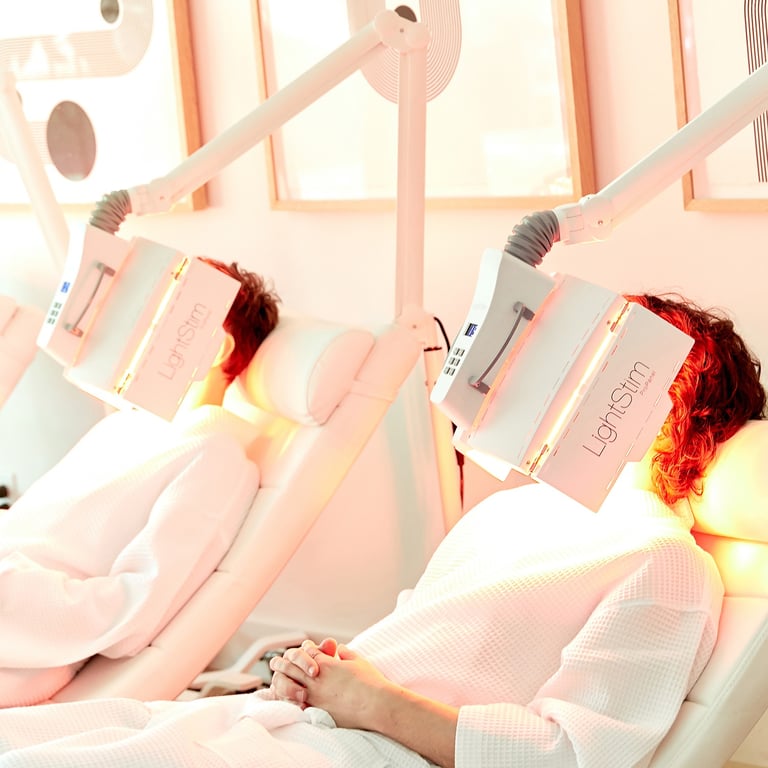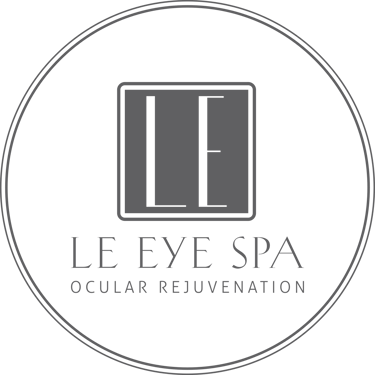Low Level Light Therapy & Styes
LLLT is a game changer for treating stubborn styes
7/30/20243 min read


Chalazia, the pesky and often painful eyelid bumps that result from a blocked meibomian gland, have traditionally been managed through a variety of methods, ranging from warm compresses to surgical interventions. While many cases resolve with conservative treatments, some chalazia stubbornly resist, prompting the need for more effective alternatives. Intense Pulsed Light "IPL" and radiofrequency "RF" treatments are non-invasive approaches, but not everybody is a candidate for these gentler alternatives. A promising new approach is low-level light therapy (LLLT), which has shown remarkable results in treating these challenging cases for those that do not want surgical intervention and, or adverse to needles or injections.
What is a Chalazion?
A chalazion forms when a meibomian gland, which produces the oil component of tears, becomes clogged. This blockage leads to a buildup of meibum, causing the gland to swell and form a cyst. Chalazia may resolve on their own, but they can persist for months and sometimes require medical intervention if they impair vision or become infected.
Treatment Options
Treatment methods for chalazia include:
Warm Compresses: Often the first line of defense, warm compresses help to soften the blocked oil and facilitate drainage.
Topical Medications: Antibiotic or steroid eye drops and ointments can reduce inflammation and infection.
Systemic Medications: Oral antibiotics or corticosteroids are used in persistent cases.
IPL, Radiofrequency: In-office treatments that use light therapy and thermal heating to reduce inflammation and loosen the meibum
Steroid injection: Used to reduce inflammation
Surgical Options: Incision and curettage (I&C) is a more invasive approach, typically reserved for severe or recurrent chalazia. While these methods can be effective, they come with limitations and risks, including discomfort, potential for scarring, or the need for multiple interventions.
Enter Low-Level Light Therapy
A recent study led by Karl Stonecipher and Richard Potvin explores the efficacy of low-level light therapy (LLLT) in treating chalazia that have not responded to traditional treatments. The study, published in Clinical Ophthalmology, offers promising data on the effectiveness of LLLT for these stubborn cases.
How Does LLLT Work?
LLLT uses specific wavelengths of light, typically red or near-infrared, to promote healing and reduce inflammation. Unlike lasers that cut or vaporize tissue, LLLT uses non-coherent light to penetrate tissues at a cellular level, stimulating various biological processes. This photobiomodulation enhances cellular function and promotes tissue repair.
The Study's Findings
The study reviewed the treatment outcomes of 26 eyes with chalazia that had been unresponsive to previous pharmaceutical or surgical interventions. Each eye received a 15-minute LLLT session followed by a standard pharmaceutical regimen, which included antibiotics and steroids.
Here are the key findings:
Single Treatment Success: After just one 15-minute LLLT session, 46% of eyes (12 out of 26) showed resolution of the chalazion within 3 days to one month.
Enhanced Success with Additional Treatment: A second LLLT treatment, administered if necessary, improved the success rate to 92%. Only 8% of eyes (2 out of 26) eventually required surgical intervention.
Safety and Efficacy: The LLLT treatment was well-tolerated with minimal side effects. It significantly reduced the need for more invasive procedures.
Why LLLT is a Game Changer
The high success rate of LLLT, combined with its non-invasive nature, makes it a compelling alternative to traditional chalazion treatments. The therapy:
Reduces the Need for Surgery: With a resolution rate of 92% after one or two treatments, LLLT minimizes the need for surgical procedures, which can be more invasive and carry risks.
Offers a Non-Surgical Option: For patients hesitant about or ineligible for surgery, LLLT provides a viable non-surgical alternative.
Is Safe and Well-Tolerated: The treatment is associated with minimal discomfort and few side effects, making it suitable for a wide range of patients, including children.
Future Directions
While the study highlights the potential of LLLT, further research is needed to solidify its role in chalazion management. Future studies could explore the efficacy of LLLT as a standalone treatment, compare it directly with other modalities, and assess its long-term outcomes.
Conclusion
Low-level light therapy represents a promising advancement in the treatment of stubborn, non-cooperative chalazia. With a high success rate and a non-invasive approach, it offers a new hope for patients struggling with persistent chalazia that do not respond to conventional therapies and or do not want surgery or are not candidates for IPL or Radiofrequency.
Another way to think of it is LLLT can be a valuable adjunct to the conventional treatments potentially making the overall treatment more effective and perhaps faster healing times. LLLT promotes improved circulation and accelerates cellular repair. It can enhance the healing process, reduce inflammation, and potentially speed up recovery times. Integrating LLLT with other therapies may help to optimize the overall effectiveness of standard treatments, making the management of chalazia more comprehensive and efficient.
As research continues to evolve, LLLT could become a standard part of the toolkit for managing these challenging eyelid cysts, offering both efficacy and improved patient comfort.
Please click here to read the full study:
Revolutionizing Chalazion Treatment:
The Role of Low-Level Light Therapy
Follow us
Subscribe to our newsletter
Hours
Appointment Only | Monday - Friday
Contact
9260 West Sunset Rd Ste 209, Las Vegas, NV 89148
Text or call: (702) 518-2711* | Fax: 888-830-5518
Email: info@leeyespa.com
*For fastest response times, please text or email


